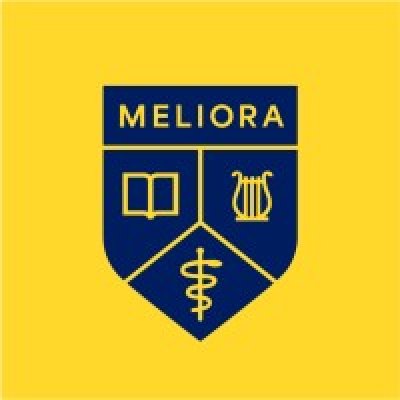Gregory Heyworth
Associate Professor of English and Computer Science; Director, Lazarus Project University of Rochester
- Rochester NY
Gregory Heyworth is a textual scientist who works on new ways to read ancient manuscripts and maps using spectral imaging technology.
Areas of Expertise
Social
Links
Biography
As director of the Lazarus Project, he and his students have worked to recover manuscripts, maps, and paintings in collections around the world and to make them available to scholars and the public. Current initiatives include the Vercelli Schoolroom Project, the Dresden Baroque Music Project, the 1492 Martin Behaim Globe in Nuremberg, the Laja Alta Bronze Age Cave Paintings in Jimena de la Frontera, Spain, and the Icons of Svanetia in Mestia, Georgia.
Education
Princeton University
Ph.D
Selected Media Appearances
How imaging technology is recovering damaged texts and rewriting history
NPR, All Things Considered radio
2023-05-25
Part 1 of the TED Radio Hour episode Found in Translation
Using spectral imaging, Gregory Heyworth can bring new life to old manuscripts. He is able to decipher texts that haven't been read in hundreds of years, and in the process, change history. Gregory Heyworth is an associate professor of English at the University of Rochester.

First Known Star Map Found Hidden in Ancient Parchment in Egypt
Newsweek print
2022-10-26
Pages were later re-analyzed by researchers at the Early Manuscripts Electronic Library, the Lazarus Project, and the University of Rochester.

U of R Researchers Study Lost Text in Centuries-old Manuscript
Spectrum News tv
2020-01-16
Scholars at the University of Rochester received a FedEx package recently, containing very rare — and very fragile — content: a 500-year-old book sent by the Smithsonian Institution. Work to uncover what's hidden inside may be even rarer than the manuscript itself.
In a second floor lab at the U of R’s Rush Rhees Library, lost treasures are being recovered.
“The moment of discovery is always incredibly exciting,” said Gregory Heyworth, associate professor of English. “It's kind of like Christmas, but for the ages."
Heyworth is also director of The Lazarus Project, a nonprofit dedicated to recovering lost manuscripts, maps, and other cultural heritage objects.
New Ways to Use Old Maps
Directions Magazine online
2019-07-10
That’s the type of question that fuels The Lazarus Project, a research endeavor now based at the University of Rochester and directed by Gregory Heyworth. By using camera sensors that can capture light from wave lengths both smaller (ultraviolet) and larger (infrared) than the human eye can detect, Heyworth and his colleagues combine bands to produce new multispectral images of early manuscripts and other historical documents that allow us to see what had been otherwise obscured for centuries. Cartographic historian Chet Van Duzer oversees the Lazarus missions that deal with maps and globes, and he has worked closely with Roger Easton, an imaging scientist at the Rochester Institute of Technology, to produce the enhanced images of the Martellus Map, with funding from the National Endowment for the Humanities.
Multispectral Imaging Brings Lost Torah Text to Light
Photonics Media
2019-04-02
A University of Rochester professor uses different wavelengths of light to photograph and analyze cultural artifacts using digital imagery to salvage objects, such as the Hebrew Torah, whose legibility has deteriorated over time.
Associate professor Gregory Heyworth, who calls his research specialty “textual science,” is the force behind the Lazarus Project, a multispectral imaging group and nonprofit organization he established to keep historical artifacts from being lost to time.
Saving the lost text of a Torah scroll
Phys.org print
2019-03-26
Lights—red, blue, green, orange—flash in Gregory Heyworth's multispectral imaging lab in the University of Rochester's Rush Rhees Library, strategically tucked beside Rare Books, Special Collections, and Preservation.
Under the lights and the lens of a multispectral imaging system is a Torah scroll, probably dating to around 1900. Torah scrolls are long rolls of parchment, each suspended between two wooden rollers and containing the handwritten Hebrew text of the Torah. Now entrusted to the congregation of the Temple Society of Concord in Syracuse, New York, the scroll once belonged to a European congregation—until the Holocaust.
Turning the gears of an early modern search engine
University of Rochester News Center online
2019-02-18
The medieval studies library is now home to a custom-made, full-size book wheel, a kind of rotating bookshelf that was the brainchild of 16th-century Italian military engineer Agostino Ramelli. The device is a “Ferris wheel for old tomes,” says Gregory Heyworth, an associate professor of English and a specialist in textual science. The core of what he calls its “fanciful design” is a system of epicyclic gears in which one gear rotates around another—like a planetary system—with the device’s shelves maintaining a constant 45-degree incline that hold the books securely as the giant wheel turns.

Buried by the Ash of Vesuvius, These Scrolls Are Being Read for the First Time in Millennia
Smithsonian Magazine print
2018-06-26
Driving south from the stone archways and quadrangles of Oxford, the road soon cuts through flat green fields reaching to the horizon. On the day I visited, fork-tailed red kites hovered high in the blue July sky. After 15 or so miles a sprawling campus of low gray buildings came into view. At first, it resembled an ordinary industrial park, until I noticed the names of the roads: Fermi, Rutherford, Becquerel, all giants of 19th- and 20th-century physics. Behind a wire fence a huge, silver dome, more than a quarter-mile in circumference, rose from the grass like a giant flying saucer. This was Diamond Light Source, and Seales was waiting inside.
He'd brought a speck of charred papyrus from one of the Herculaneum scrolls he studied a decade earlier. The ink on it, he had found, contained a trace of lead. In Grenoble, direct X-ray imaging of the scrolls had not been enough to detect the ink. But when you fire hugely powerful X-rays through lead, the metal emits electromagnetic radiation, or “fluoresces,” at a characteristic frequency. Seales hoped to pick up that signal with a detector placed beside the fragment, which was specially calibrated to capture photons at lead's characteristic frequency.
Successfully reading Herculaneum scrolls could trigger a new “renaissance of classical antiquity,” says Gregory Heyworth, a medievalist at the University of Rochester in New York. He points out that virtual unwrapping could be applied to countless other texts. In Western Europe alone, he estimates, there are tens of thousands of manuscripts dating from before A.D. 1500—from carbonized scrolls to book covers made from older, glued-together pages—that could benefit from such imaging.
“We'd change the canon,” Heyworth says. “I think the next generation is going to have a very different picture of antiquity.”
The Future of the Past
University of Rochester News Center online
2017-04-12
Textual scientist Gregory Heyworth lights up the first drafts of history.

Connections: Trying to solve one of the world's great mysteries -- and read ancient books
WXXI Connections radio
2017-03-06
For all of ways we use the term "Epicurean," here's something strange: the original works of Epicurus himself have never been found. It's only through letters and quotations that we glimpse his work. But what if a library on a seaside villa contains the lost works of Epicurus -- and dozens of others?

Treasured 16th-Century 'Lenox Globe' Gets a Digital Makeover
LiveScience online
2015-01-14
Researchers took 18 pictures around the globe's equator, 39 images at various latitudes and one of the pole; then, they repeated the process for the Southern Hemisphere. Different colored lights were used to capture the images at different wavelengths, including ultraviolet, which is powerful enough to damage your eyes if you don't shield them, the researchers cautioned.

Is this scribbled signature the work of Shakespeare?
NBC News tv
2012-04-03
Researchers using high-tech photography have reconstructed a signature that may belong to William Shakespeare — or perhaps a clever forger.

New imaging system captures text from barely open books
University of Rochester News Center online
2021-10-21
Rochester textual scientist Gregory Heyworth led the development of a digitization method for books with fragile binding.

New Imaging Methods Shine Light on Hidden Texts
Chronicle of Higher Education print
2015-06-02
“Humanities researchers need to understand that multispectral projects can fundamentally change the way we do research,” said Gregory Heyworth, director of the Lazarus Project, which hopes to give a diverse array of researchers access to those tools at little cost.

Columbus Sailed Here! Multi-Spectral Imaging of an Important 15th Century World Map
National Endowment for the Humanities online
2014-10-07
An interdisciplinary team of imaging scientists and scholars gathered at Yale University’s Beinecke Rare Book and Manuscript Library to undertake exciting work on a map that in all probability influenced Christopher Columbus’s conception of world geography. Drawn by German cartographer, Henricus Martellus, who was working in Florence, Italy, in about 1491, the map shows the entire world as it was known at the time.
Selected Event Appearances
TED Talk: How I'm Discovering the Secrets of Ancient Texts
TEDxUM
2019-01-08
How to read an invisible classic | Gregory Heyworth | TEDxUM
TEDxUM University of Mississippi
2015-11-30
Selected Articles
Ineloquent Ends: Simplicitas, Proctolalia, and the Profane Vernacular in the Miller's Tale
University of Chicago Press JournalsGregory Heyworth
2019-01-08
The complaint of clerics in early-fifteenth-century England that Latin eloquence lay toothless and gibbering on its deathbed was neither new nor surprising nor even true. What this particular author is really complaining about is the rise of a vernacular poetic in the fourteenth century in such authors as Langland and Chaucer that, influenced by the demotic energies of Wyclif, valued linguistic and narrative simplicitas over ornate Latinity.
Rediscovering text in the Yale Martellus map
2015 IEEE International Workshop on Information Forensics and Security (WIFS)Roger L. Easton ; Kevin Sacca ; Gregory Heyworth ; Kenneth Boydston ; Chet Van Duzer ; Michael Phelps
2015-01-11
A world map painted by Henricus Martellus c. 1491 is widely acknowledged to be of great importance in the history of cartography, but has been little studied since it came to the attention of scholars in 1959 because the pigments used to write the descriptive texts and place names has faded or flaked off of the surface. Spectral images of this map collected in August 2014 have been processed by several statistical methods, allowing much of the text to be recovered. The methods may be applied to other documents and for forensic applications.
“Initial inspection of reagent damage to the Vercelli Book,”
Comparative Oriental Manuscript StudiesIra Rabin, Oliver Hahn, Roger Easton, Jr., Keith T. Knox, Ken Boydston, Gregory Heyworth, Timothy Leonardi, Michael Phelps
2015-01-11
The use of chemical reagents for text enhancement was quite common in the 19th century. Their application resulted in permanent damage, irreversibly obscuring the writing. This paper describes an effort to find a suitable technique to read the passages in the Vercelli Book that were obliterated by the use of the gallnut tincture.







